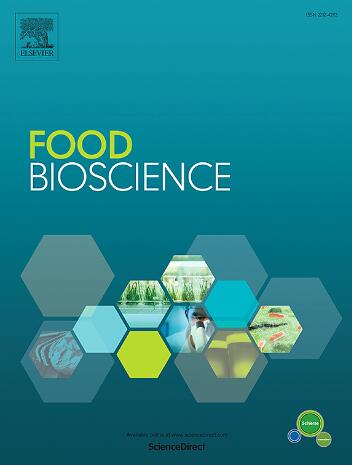木犀草素抑制toll样受体4激活的分子机制:多光谱分析和分子模拟
IF 5.9
1区 农林科学
Q1 FOOD SCIENCE & TECHNOLOGY
引用次数: 0
摘要
过度的炎症反应是多种疾病发生的重要原因。toll样受体4 (TLR4)是一种中枢先天免疫受体,是治疗炎症性疾病的一个有希望的靶点。因此,寻找TLR4的天然抑制剂对于预防和治疗炎症性疾病至关重要。木犀草素(Luteolin, Lut)是一种具有显著抗炎作用的膳食类黄酮,是一种极具发展前景的功能性食品原料。通过综合光谱表征和计算模拟,阐明了Lut与TLR4之间的分子相互作用动力学。发现Lut通过静态猝灭表现出浓度依赖性的TLR4荧光猝灭,自发形成稳定的配合物,推测其可能主要通过静电和氢键作用与TLR4中氨基酸残基Arg264、Tyr292、Asp294和Thr319结合。Lut降低了TLR4 α-螺旋的含量,增加了随机线圈的含量,降低了其蛋白质致密性和结构不稳定性,从而抑制了TLR4的活化。通过丙氨酸诱变,突变蛋白与Lut的结合常数显著降低,证实Arg264和Tyr292是Lut与TLR4相互作用的关键残基。这些发现揭示了Lut调控TLR4构象变化并抑制其活化的分子机制,为开发Lut作为TLR4靶向天然治疗剂提供了重要的理论基础。本文章由计算机程序翻译,如有差异,请以英文原文为准。

Molecular mechanism by which luteolin inhibits toll-like receptor 4 activation: Multi-spectroscopic analysis and molecular simulation
Excessive inflammatory response is an important cause of various diseases. Toll-like receptor 4 (TLR4), a central innate immune receptor, represents a promising target for treating inflammatory diseases. Therefore, the search for natural inhibitors of TLR4 is essential for the prevention and treatment of inflammatory diseases. Luteolin (Lut), a dietary flavonoid with significant anti-inflammatory effects, is a highly promising functional food ingredient. Through integrated spectroscopic characterization and computational simulations, the molecular interaction dynamics between Lut and TLR4 were elucidated in this work. It was found that Lut exhibited concentration-dependent TLR4 fluorescence quenching through static quenching, forming a stable complex spontaneously, speculating that it may bind to the amino acid residues Arg264, Tyr292, Asp294 and Thr319 in TLR4 mainly through electrostatic and hydrogen-bonding interactions. Lut decreased the content of α-helix of TLR4, increased the content of random coil, and decreased its protein compactness and structural instability, thereby inhibiting TLR4 activation. The binding constant between the mutant protein and Lut was significantly decreased by alanine mutagenesis, confirming that Arg264 and Tyr292 are critical residues for the interaction between Lut and TLR4. These findings revealed the molecular mechanism by which Lut regulated the conformational changes of TLR4 and inhibited its activation, providing an important theoretical foundation for exploiting Lut as a natural TLR4-targeted therapeutic agent.
求助全文
通过发布文献求助,成功后即可免费获取论文全文。
去求助
来源期刊

Food Bioscience
Biochemistry, Genetics and Molecular Biology-Biochemistry
CiteScore
6.40
自引率
5.80%
发文量
671
审稿时长
27 days
期刊介绍:
Food Bioscience is a peer-reviewed journal that aims to provide a forum for recent developments in the field of bio-related food research. The journal focuses on both fundamental and applied research worldwide, with special attention to ethnic and cultural aspects of food bioresearch.
 求助内容:
求助内容: 应助结果提醒方式:
应助结果提醒方式:


